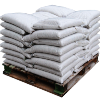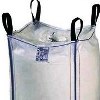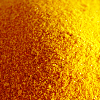| Aadhunik Industries is a manufacturing group company. Aadhunik Industries is pioneer manufacturers of Specialty Chemicals, Pharmaceutical Excipients, Food Fragrance & Flavor chemicals in India. It has toll manufacturers and representatives in UAE, Europe, Canada & USA and agents & customers in all countries like USA, Canada, Europe, UAE Dubai, South Africa, Tanzania, Kenya, Egypt, Nigeria, Uganda, Turkey, Mexico, Brazil, Chile, Argentina, Malaysia, Indonesia, Thailand, Korea, Japan, etc.Halal & Kosher certified Aluminium Chloride Anhydrous Manufacturers made in a FDA-GMP plant s offered. |
| The units have one or more of the certifications like FDA GMP, ISO 9001, ISO 22000, HACCP, REACH, Kosher & Halal and DMF support is available. |





Aluminum Chloride Aluminium Chloride Anhydrous Manufacturers
Specifications of Aluminum Chloride Anhydrous Manufacturers
Aluminum Chloride Anhydrous SDS GHS, MSDS Sheet, Material Safety Data Sheet Aluminium Chloride Anhydrous
1. Product Identification
Synonyms: Aluminum trichloride; Trichloro aluminum
CAS No.: 7746-70-0
EINECS: EC Number: 231-208-1
Molecular Weight: 133.34
Chemical Formula: AlCl3
Recommended usage: Industrial Manufacturing.
2. Hazards Identification
GHS, Globally Harmonized System Classification in accordance with 29 CFR 1910
Classification according to Regulation (EC) No 1272/2008:
Acute toxicity, oral Category 5
Skin corrosion/irritation Category 1A, B, C
Serious eye damage Category 1
Specific target organ toxicity – repeated exposure, Inhalation Category , Lungs.
Specific target organ toxicity – repeated exposure, Oral Category 2, Central nervous system.
Hazardous to the aquatic environment, acute hazard Category 3
Labeling according to GHS & Regulation (EC) No 1272/2008
GHS Label Elements Aquatic Toxicity |
GHS Label Elements Corrosive |
Signal Words: Danger
Hazard statements:
H303: May be harmful if swallowed.
H314: Causes severe skin burns and eye damage.
H372: Causes damage to organs (Lung, Central nervous system) through prolonged or repeated exposure.
H402: Harmful to aquatic life.
Precautionary statements:
P260: Do not breathe dust/fume/gas/mist/vapors/spray.
P261: Avoid breathing dust/ fume/ gas/ mist/ vapors/ spray.
P262: Do not get in eyes, on skin, or on clothing.
P264 Wash skin thoroughly after handling.
P270: Do not eat, drink or smoke when using this product.
P273: Avoid release to the environment.
P280: Wear protective gloves/protective clothing/eye protection/face protection.
P301 + P330 + P331 IF SWALLOWED: rinse mouth. Do NOT induce vomiting.
P303 + P361 + P352 IF ON SKIN (or hair): Remove/Take off immediately all contaminated clothing. Wash with plenty of soap and water.
P304 + P340 IF INHALED: Remove person to fresh air and keep comfortable for breathing.
P305+P351+P338: IF IN EYES: Rinse cautiously with water for several minutes. Remove contact lenses, if present and easy to do. Continue rinsing.
P314: Get Medical advice/attention if you feel unwell.
P337+P313: If eye irritation persists: Get medical advice/ attention.
P263: Avoid contact during pregnancy/while nursing.
P405: Store locked up.
P501: Dispose of contents/ container to an approved waste disposal plant.
Classification according to EU Directives 67/548/EEC or 1999/45/EC:
C Corrosive, Xn Harmful, T Toxic N Dangerous for the environment.
R34, R48/20, R48/25, R51/53: Toxic to aquatic organisms, may cause long-term adverse effects in the aquatic environment.
For the full text of the S-statement & R-phrases mentioned in this Section, see Section 16.
OSHA Hazards: Target Organ Effect, Corrosive, Teratogen, Reproductive hazard, Water Reactive.
Target Organ Effect, Corrosive, Teratogen
Target Organs: Lungs.
Other hazards which do not result in classification: Reacts violently with water.
HMIS (Perceived)
Health hazard: 3
Flammability: 1
Physical hazards: 3
NFPA (Perceived)
Health hazard: 3
Fire: 0
Reactivity Hazard: 2
3. Composition/Information on Ingredients
Ingredient: Aluminum Chloride Anhydrous or Aluminium Chloride Anhydrous
CAS No.: 7746-70-0
EINECS: EC Number: 231-208-1
Percent: 97 - 100%
4. First Aid Measures
Always seek medical attention after first aid measures are provided.
Inhalation: Remove to fresh air. If not breathing, give artificial respiration. If breathing is difficult, give oxygen. Get medical attention.
Ingestion: Never give anything by mouth to an unconscious person. Get medical attention.
Skin Contact: Wipe off excess material from skin then immediately flush skin with plenty of water for at least 15 minutes. Remove contaminated clothing and shoes. Get medical attention. Wash clothing before reuse. Thoroughly clean shoes before reuse.
Eye Contact: Immediately flush eyes with plenty of water for at least 15 minutes, lifting lower and upper eyelids occasionally. Get medical attention immediately.
Note to Physician: Treat symptomatically.
5. Fire Fighting Measures
Flammability of the Product: The product is not flammable.
Auto-Ignition Temperature: NA.
Flash Points: NA.
Flammable Limits: NA.
Products of Combustion: It forms oxides of aluminum and hydrochloric acid when heated to decomposition.
Fire: Non flammable.
Explosion: not known.
Fire Extinguishing Media: Use dry chemical, foam, or carbon dioxide.
Special Information In the event of a fire, wear full protective clothing and NIOSH-approved self-contained breathing apparatus with full face piece operated in the pressure demand or other positive pressure mode. At high temperatures or when moistened under fire conditions, it may produce toxic or irritating fumes.
6. Accidental Release Measures
Small Spill: Avoid dust formation. Avoid breathing dust. Ensure adequate ventilation. Use appropriate tools to put the spilled solid in a convenient waste disposal container. Finish cleaning by spreading water on the contaminated surface and dispose of according to local and regional authority requirements.
Large Spill: Do not let the product enter drains. Use a shovel to put the material into a convenient waste disposal container. Finish cleaning by spreading water and swab.
7. Handling and Storage
Do not breathe dust. Wear suitable protective clothing. In case of insufficient ventilation, wear suitable respiratory equipment.
Avoid contact with skin and eyes. Avoid formation of dust and aerosols. Wash hands thoroughly after handling. Provide appropriate exhaust ventilation at places where dust is formed. If you feel unwell, seek medical attention.
Keep Aluminium Chloride Anhydrous in a tightly closed container, stored in a cool, dry, ventilated area. Protect against physical damage or contact with oxidizing material and combustible substances. Avoid moisture and store away from water sources. It is to be stored in corrosive area.
8. Exposure Controls/Personal Protection
Airborne Exposure Limits: None established. Assure it as below 2mg/m3.
Ventilation System: A system of local and/or general exhaust is recommended to keep employee exposures as low as possible. Local exhaust ventilation is generally preferred because it can control the emissions of the contaminant at its source, preventing dispersion of it into the general work area.
Personal Respirators (NIOSH Approved): For conditions of use where exposure to dust or mist is apparent and engineering controls are not feasible, a particulate respirator may be worn. For emergencies or instances where the exposure levels are not known, use a full-face positive-pressure, air-supplied respirator.
Skin Protection: Wear protective gloves and clean body-covering clothing.
Eye Protection: Use chemical safety goggles and/or full face shield where dusting or splashing of solutions is possible. Maintain eye wash fountain and quick-drench facilities in work area.
Other Control Measures: Maintain good housekeeping in work area. Dust deposits on floors and other surfaces may pick up moisture and cause the surfaces to become slippery and present safety hazards. Handle in accordance with good industrial hygiene and safety practice. Wash hands after handling.
9. Physical and Chemical Properties
Appearance: Aluminum Chloride Anhydrous is yellowish crystals or powder or granules.
Odor: Typical
Solubility: Readily soluble in water and it reacts with it.
pH: Not available.
Density: 2.45 gm/cc
Molecular Weight: 133.34
Molecular Formula: AlCl3
% Volatile by volume @ 21C (70F): 0
Boiling Point: Sublimes.
Melting Point: Sublimes
Vapor Density (Air=1): No information found
Vapor Pressure (mm Hg): No information found
Evaporation Rate (BuAc=1): No information found
10. Stability and Reactivity
Stability: Aluminium Chloride is stable under ordinary conditions of use and storage. It must be kept in air tight containers.
Hazardous Decomposition Products: It produces oxides of aluminum along with hydrochloric acid when heated to decomposition.
Hazardous Polymerization: Will not occur.
Incompatibilities: Reacts with metals and water including moisture. Water, ethylene oxide, oxygen difluoride, phenols, nitro compounds (organic, e.g. nitrobenzene, nitroglycerine, picric acid, trinitrotoluene), perchloryl fluoride, benzene are reported incompatibles.
Conditions to Avoid: Moisture, Heat, Sun light, Incompatibles.
11. Toxicological Information
Toxicity to Animals:
Skin, rabbit: LD50 = >2000 mg/kg;
Oral, mouse: LD50 = 1130 mg/kg;
Oral, rat: LD50 = 3450 mg/kg;
Special Remarks on Toxicity to Animals: Not available.
Carcinogenic Effects: Not a reported carcinogen.
Mutagenic Effects: It may have mutagenic effect.
Teratogenic Effects: Not available.
Developmental Toxicity: Not available.
Chronic Effects on Humans: Causes damage to the following organs: lungs, mucous membranes.
Other Toxic Effects on Humans: Hazardous in case of skin contact, of ingestion, of inhalation.
12. Ecological Information
Environmental Toxicity:
Toxicity to fish:
LC50 - Carassius auratus (goldfish) - 0.15 mg/l - 7 d
LC50 - Oncorhynchus mykiss (rainbow trout) - 7 mg/l - 96 h
Toxicity to daphnia and other aquatic invertebrates:
EC50 - Daphnia magna (Water flea) - 3.9 mg/l - 48 h
Toxicity to algae:
EC50 - Pseudokirchneriella subcapitata (green algae) - 0.57 mg/l - 96 h
Biodegradability: -
BOD5 and COD: Not available.
Environmental Fate: No information found.
13. Disposal Considerations
Whatever cannot be saved for recovery or recycling should be managed in an appropriate and approved waste disposal facility. Processing, use or contamination of this product may change the waste management options. State and local disposal regulations may differ from federal disposal regulations. Dispose of container and unused Aluminum chloride Anhydrous in accordance with federal, state and local requirements.
14. Transport Information
DOT (USA) & ADR/RID
UN-Number: 1726 Class: 8 Corrosive Material Packing group: II
Proper shipping name: Aluminum Chloride Anhydrous
Marine pollutant: No
Poison Inhalation Hazard: No
IMDG
UN-Number: 1726 Class: 8 Corrosive Material Packing group: II; -- EMS-No: F-A, S-Q
Proper shipping name: Aluminum Chloride Anhydrous
Marine pollutant: No
IATA
UN-Number: 1726 Class: 8 Corrosive Material Packing group: II
Proper shipping name: Aluminum Chloride Anhydrous
15. Regulatory Information
USA:
OSHA Hazards: Hazardous.
SARA Codes: CAS # 7631-99-4: flammable.
SARA 302: No chemicals in this material are subject to the reporting requirements of SARA Title III, Section 302.
Section 313: This material does not contain any chemical components with known CAS numbers that exceed the threshold reporting levels established by SARA Title III, Section 313.
SARA 311/312 Hazards: Acute Health Hazard Chronic Health Hazard.
TSCA: CAS# 7631-99-4 is on the TSCA Inventory.
CERCLA Hazardous Substances and corresponding RQs: None of the chemicals in this material have an RQ.
California Prop 65: This product does not contain any chemicals known to State of California to cause cancer, birth defects, or any other reproductive harm.
Massachusetts Right To Know Components: Aluminum Chloride anhydrous, CAS-No.: 7446-70-0
Pennsylvania Right To Know Components: Aluminum Chloride anhydrous, CAS-No.: 7446-70-0
New Jersey Right To Know Components: Aluminum Chloride anhydrous, CAS-No.: 7446-70-0
Canada
CAS# 7446-70-0 is listed on Canada's DSL List
Canadian WHMIS Classifications: E, F
CAS# 7446-70-0 is listed on Canada's DSL List
Australian Hazchem Code: 4X
Poison Schedule: None
16. Other Information
EINECS: EC Number: 231-208-1
H303 = May be harmful if swallowed.
H314 = Causes severe skin burns and eye damage.
H372 = Causes damage to organs (Lung, Central nervous system) through prolonged or repeated exposure.
H402 = Harmful to aquatic life.
C Corrosive, Xn Harmful, T Toxic N Dangerous for the environment.
R34 = Causes burns.
R48/20 = Harmful: danger of serious damage to health by prolonged exposure through
inhalation.
R48/25 = Toxic: danger of serious damage to health by prolonged exposure if swallowed.
R51/53 = Toxic to aquatic organisms, may cause long-term adverse effects in the aquatic environment.
Safety Phrases:
S 7/8 Keep container tightly closed and dry.
S 28A After contact with skin, wash immediately with plenty of water.
Disclaimer:
**************************************
Our company provides this SDS sheet in good faith but makes no representation as to its comprehensiveness or accuracy. This M SDS sheet is intended only as a guide to the appropriate precautionary handling of the material by a properly trained person using this product. The above information has been compiled from various sources and has the possibility of discrepancy and being out-dated information. Individuals receiving the information must exercise their independent judgment and do further search in determining its appropriateness for a particular purpose. In no case shall our company be liable to loss or damages by the product user.
**************************************
Aluminium Chloride Hexahydrate Manufacturers
Aadhunik Industries
Ankleshwar Gujarat &, Mumbai, India
TEL: (OFFICE) 91-22-23774610, 23723564.
e-mail: info@aadhunikindustries.com

Exports to USA, Canada, UAE, Dubai, South Africa, Tanzania, Kenya, Nigeria, Egypt, Uganda, Turkey, Mexico, Brazil, Chile, Argentina, Europe Netherlands, Italy, Spain, Germany, Portugal, France, Malaysia, Indonesia, Thailand, Korea, Vietnam, Japan, etc.
Copyright and Usual Disclaimer is Applicable